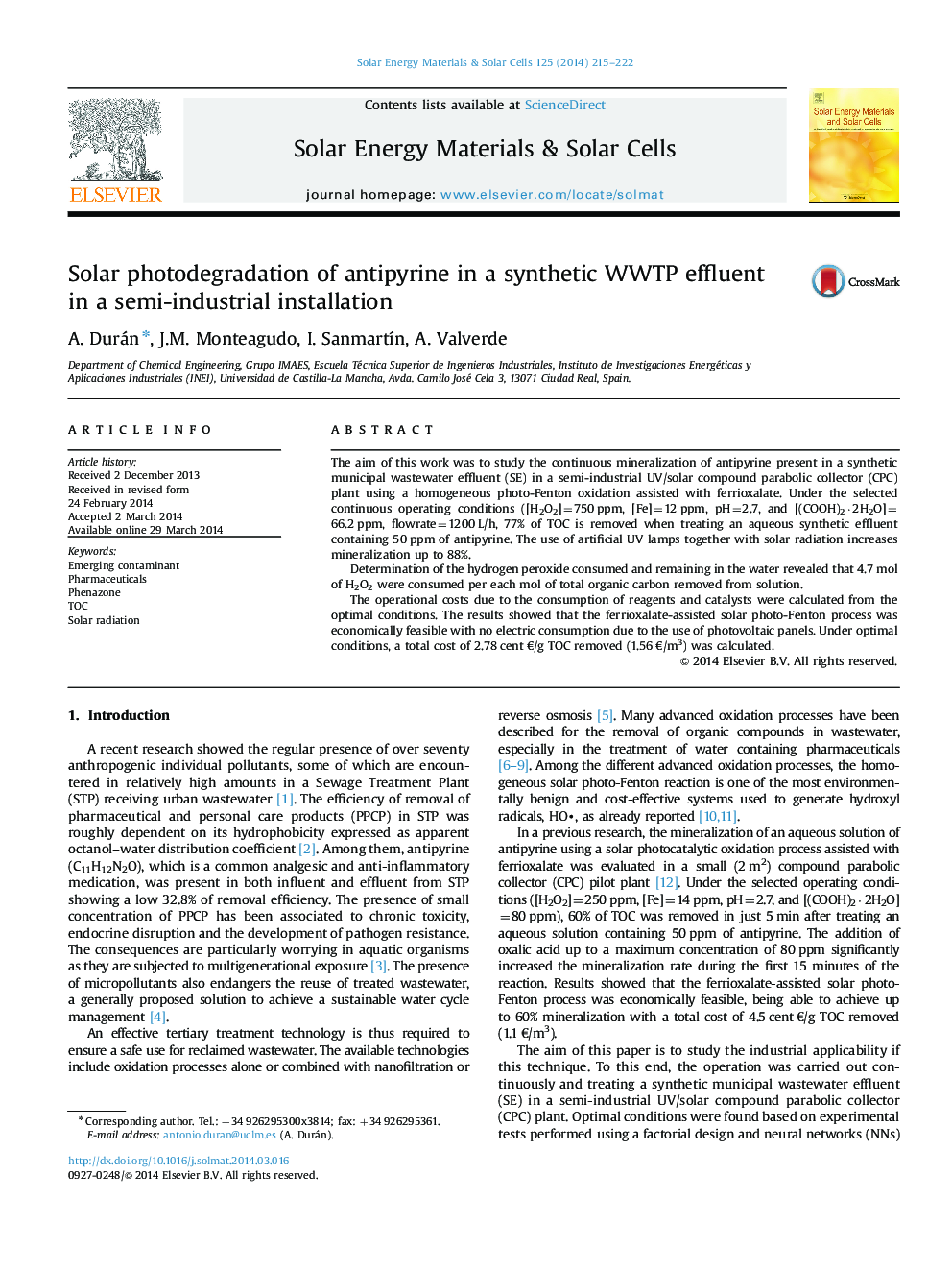| Article ID | Journal | Published Year | Pages | File Type |
|---|---|---|---|---|
| 78104 | Solar Energy Materials and Solar Cells | 2014 | 8 Pages |
•Antipyrine in a S.E. was mineralized in a semi-industrial solar CPC plant.•Under selected conditions, 77% of TOC is removed when treating 1.2 m3/h.•The additional use of artificial UV lamps increases mineralization up to 88%.•4.7 moles of H2O2 were consumed per each mol of TOC removed from solution.•The operating cost in a solar CPC semi-industrial pilot plant is 1.56 €/m3.
The aim of this work was to study the continuous mineralization of antipyrine present in a synthetic municipal wastewater effluent (SE) in a semi-industrial UV/solar compound parabolic collector (CPC) plant using a homogeneous photo-Fenton oxidation assisted with ferrioxalate. Under the selected continuous operating conditions ([H2O2]=750 ppm, [Fe]=12 ppm, pH=2.7, and [(COOH)2·2H2O]=66.2 ppm, flowrate=1200 L/h, 77% of TOC is removed when treating an aqueous synthetic effluent containing 50 ppm of antipyrine. The use of artificial UV lamps together with solar radiation increases mineralization up to 88%.Determination of the hydrogen peroxide consumed and remaining in the water revealed that 4.7 mol of H2O2 were consumed per each mol of total organic carbon removed from solution.The operational costs due to the consumption of reagents and catalysts were calculated from the optimal conditions. The results showed that the ferrioxalate-assisted solar photo-Fenton process was economically feasible with no electric consumption due to the use of photovoltaic panels. Under optimal conditions, a total cost of 2.78 cent €/g TOC removed (1.56 €/m3) was calculated.
Graphical AbstractFigure optionsDownload full-size imageDownload as PowerPoint slide
